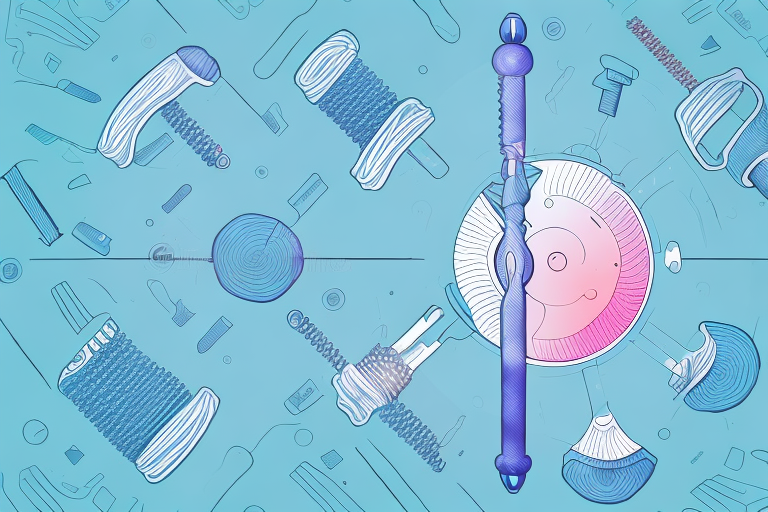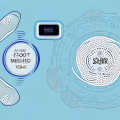Muscle pain and tension are common issues for many people, and there are plenty of ways to alleviate and manage these problems. One such way is by using a deep tissue massager that can be attached to a drill. This unconventional approach to massage therapy has been gaining popularity over the years, and for good reason. In this article, we’ll explore the benefits of deep tissue massage, the different types of massagers available, why it’s a good idea to use a drill attachment, how to prepare your drill for the attachment, and tips for using it safely and effectively on different areas of your body. We’ll also discuss some dos and don’ts of using a deep tissue massager and proper maintenance and cleaning of your massager.
Understanding the Benefits of Deep Tissue Massage
Deep tissue massage is a type of massage therapy that works on the deeper layers of muscle and connective tissue. This massage technique targets muscle knots or adhesions, which are areas of muscle fibers that have become stuck together and cause pain and discomfort. Deep tissue massage helps to break down these muscle knots, alleviate pain, and improve range of motion. It also helps to improve blood flow and reduce inflammation, making it an effective treatment for sports-related injuries or chronic pain.
Aside from its physical benefits, deep tissue massage can also have positive effects on mental health. The pressure applied during the massage can help to release tension and promote relaxation, reducing stress and anxiety. This can lead to improved sleep quality and an overall sense of well-being. Additionally, the one-on-one attention and touch provided during a massage can help to increase feelings of connection and reduce feelings of loneliness or isolation.
Types of Deep Tissue Massagers Available in the Market
There are different types of deep tissue massagers available in the market, including handheld massagers, massage guns, and massage balls. When it comes to a massager that can be attached to a drill, there are typically two types: foam ball attachments and attachment heads with multiple angular extensions. Both types work to apply deep and intense pressure to the muscles, but with different approaches. Foam ball attachments work by rolling the ball over the muscles in a circular motion, while attachment heads with multiple angular extensions work by pulsating and vibrating against the muscles.
It is important to note that while deep tissue massagers can provide relief for sore muscles, they should be used with caution. It is recommended to start with a lower intensity and gradually increase as needed. It is also important to avoid using the massager on areas with injuries or inflammation. Consulting with a healthcare professional before using a deep tissue massager is also recommended, especially for individuals with pre-existing medical conditions.
Why Use a Drill Attachment for a Deep Tissue Massager?
Using a drill attachment for a deep tissue massager offers several benefits. For one, it provides a more effective and intense massage experience. The high speed and power of the drill allows the attachment to access deeper layers of muscle tissue, delivering a more effective massage than manual massagers. It’s also a time-efficient option, as it allows you to cover larger areas of the body in a shorter amount of time.
Another advantage of using a drill attachment for a deep tissue massager is that it can help to relieve muscle tension and soreness more quickly. The deep tissue massage provided by the drill attachment can help to break up knots and adhesions in the muscles, which can lead to improved flexibility and range of motion. Additionally, using a drill attachment can be more comfortable for the person giving the massage, as it reduces the strain on their hands and wrists that can occur with manual massagers.
Preparing Your Drill for the Massager Attachment
Before using your drill massager attachment, it’s important to ensure that your drill is compatible with the attachment. Check the specifications of the attachment to determine what type of drill is recommended. Once you’ve confirmed compatibility, attach the massager to the drill securely, making sure it’s tightened properly. If your massager requires a specific speed setting, adjust your drill accordingly.
It’s also important to make sure that your drill is in good working condition before using the massager attachment. Check the drill’s battery or power source to ensure it’s fully charged or plugged in. Inspect the drill for any damage or wear and tear that could affect its performance. Using a faulty drill could not only damage the attachment but also pose a safety risk to the user. Always prioritize safety when using power tools.
Tips for Choosing the Right Drill and Attachment for Your Massager
When choosing a drill and attachment for your massager, make sure to consider the power and speed of the drill. A drill with higher RPMs and more power will be more effective at delivering a deep tissue massage. Additionally, consider the shape and size of the attachment head. A larger head will cover more surface area, but may be more difficult to maneuver in tight areas. A smaller attachment head may be more precise, but less effective on larger muscle groups.
How to Safely Attach and Detach the Massager from Your Drill
When attaching and detaching your deep tissue massager from your drill, make sure the drill is turned off and has come to a complete stop. Loosen the attachment carefully, and avoid pulling or yanking on the attachment to remove it. Inspect the attachment for any signs of damage or wear before attaching it to the drill.
Tips for Using the Deep Tissue Massager on Different Areas of Your Body
When using your deep tissue massager on different areas of your body, it’s important to start slowly and increase intensity gradually. Pay attention to any areas of pain or discomfort and adjust the pressure accordingly. Avoid using the massager on bones or joints, and always keep the massager moving to prevent bruising or soreness. Use the massager on larger muscle groups, such as the back or thighs, for no more than 15 minutes at a time.
Dos and Don’ts of Using a Deep Tissue Massager You Put in Your Drill
DO use the massager regularly to help manage pain and tension.DO start slowly and gradually increase the intensity of your massage.DO pay attention to areas of pain or discomfort and adjust pressure accordingly.DON’T use the massager on bones or joints.DON’T use the massager on the same area for more than 15 minutes at a time.DON’T use the massager without properly securing it to the drill and ensuring compatibility.
Proper Maintenance and Cleaning of Your Deep Tissue Massager
To keep your deep tissue massager in good condition, wipe it down with a clean cloth after each use to remove any sweat or dirt. If your massager is waterproof, you can rinse it under running water and use mild soap to clean it. Avoid using harsh cleaning products or chemicals, as these can damage the attachment. Store the massager in a clean, dry place, away from direct sunlight or extreme temperatures.
With these tips and tricks, you’re ready to start using your deep tissue massager attachment with your drill for a more intense and effective muscle massage experience. As with any massage technique, listen to your body and adjust accordingly. Happy massaging!





